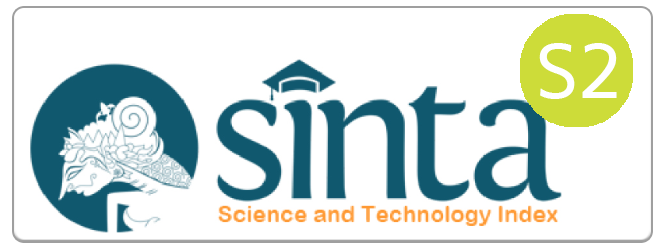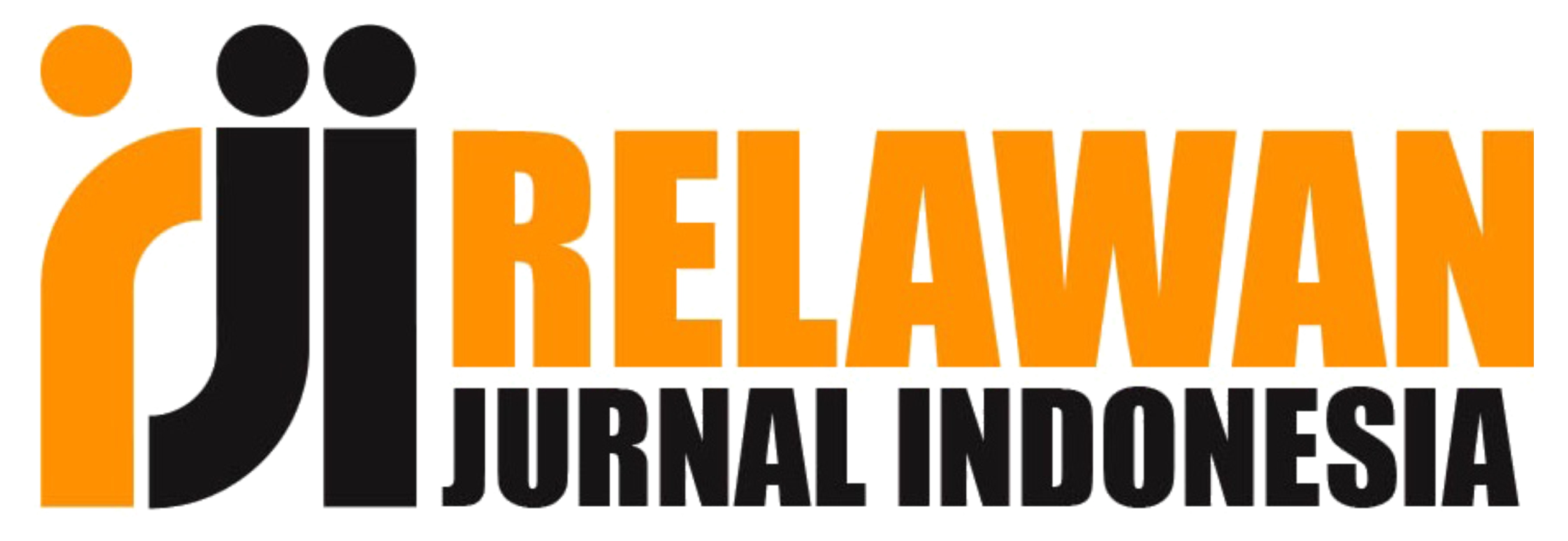Digital Marketing Development Model through Digital Literacy Mediation to Improve SME's Performance
Abstract
Keywords
Full Text:
PDFReferences
Aryanto, V. D. W., & Wismantoro, Y. (2020). Women Green Entrepreneurs Orientation in Relation with SMEs’ Batik Performance Using Online Social Media. International Journal of Computers, 5, 37–51. https://www.iaras.org/iaras/home/cijc/women-green-entrepreneurs-orientation-in-relation-with-smes-batik-performance-using-online-social-media
Apasrawitote, D., Yawized, K, Muneesawany.(2022). Digital marketing capability: the mystery of business. Marketing Intelligence and Planning. 40(4). 477-496.
Arifuddin, M., Qamari, I.N and Surwanti, A. (2022). Digital Literacy, Digital Culture and Business Performance: A Comprehensive Conceptual Framework. Journal of Marketing and Emerging Economics. 2.(10). 59-67.
Baumgartner, H., & Homburg, C. (1996). Applications of structural equation modeling in marketing and consumer research: A review. International Journal of Research in Marketing, 13(2), 139-161. DOI: https://doi.org/10.1016/0167-8116(95)00038-0
Benitez, J., Henseler, J., Castillo, A., & Schuberth, F. (2020). How to perform and report an impactful analysis using partial least squares: Guidelines for confirmatory and explanatory IS research. Information & Management, 57(2), 103168. DOI: https://doi.org/10.1016/j.im.2019.05.003
Berg, T., Burg, V., Gombovic, A and Puri, M (2020). On the rise of fintech, credit scoring using digital footprints. The Review of Financial Studies. 33(7) 2845-2897.
Bongomin, G.O.C., Ntayi, J.M., Munene, J.C., Malinga, C.A. (2017). The relationship between access to finance and growth of SMEs in developing economies. Review of International Business and Strategy. 27(4). 520-538.
Castaneda, J.A., Frias-Jamilena, D.M., Rodriguez-Molina, M.A., and Jones, A. (2019) Online Marketing Effectiveness - the influence of information load and digital literacy, a cross-country comparison. Electronics Market. https://doi.org/10.1007/s12525-019-00372-9
Cortez, R.M., and Hidalgo, P. (2022). Prioritizing B2B marketing capabilities: crossvergence in advanced and emerging economies. Industrial Marketing Management. 105. 422-438.
Daud, I., Nurjanah, D., Mohyi, A., Ambarwati, T., Cahyono, Y., Haryoko, A.E., Handoko, S.L., Putra, R.S., Wijoyo, H., Ariyanto, A., Jihadi, M. (2022). The effect of digital marketing, digital finance and digital payment on finance performance of Indonesian SMEs. International Journal of Data and Network Science. 6. 37-44
Faruk, M., Rahman, M., & Hasan, S. (2021). How digital marketing evolved over time: A bibliometric analysis on Scopus database. Heliyon, 7(12), e08603. https://doi.org/10.1016/j.heliyon.2021.e08603
Fornell, C., & Larcker, D. F. (1981). Evaluating structural equation models with unobservable variables and measurement error. Journal of marketing research, 18(1), 39-50. DOI: https://doi.org/10.1177/002224378101800104
Gaur, A. S., Pattnik, C., Singh, D and Lee, J.(2019). The role of business group affiliation and most country characteristics. Journal of International Business Studies. 50. 1253-1282
Hair, J., & Alamer, A. (2022). Partial Least Squares Structural Equation Modeling (PLS-SEM) in second language and education research: Guidelines using an applied example. Research Methods in Applied Linguistics, 1(3), 100027. DOI: https://doi.org/10.1016/j.rmal.2022.100027
Hair, J. F., Risher, J. J., Sarstedt, M., & Ringle, C. M. (2019). When to use and how to report the results of PLS-SEM. European Business Review, 31(1), 2-24. DOI: 10.1108/EBR-11-2018-0203
Hair Jr, J. F., Sarstedt, M., Ringle, C. M., & Gudergan, S. P. (2017). Advanced issues in partial least squares structural equation modeling: SAGE Publications.
Henseler, J., Ringle, C. M., & Sarstedt, M. (2015). A new criterion for assessing discriminant validity in variance-based structural equation modeling. Journal of the Academy of Marketing Science, 43(1), 115-135. DOI: https://doi.org/10.1007/s11747-014-0403-8
Henseler, J., & Schuberth, F. (2020). Using confirmatory composite analysis to assess emergent variables in business research. Journal of Business Research, 120, 147-156. DOI: https://doi.org/10.1016/j.jbusres.2020.07.026
Hollebeek, L.D., and Macky, K. (2019). Digital content marketing's role in fostering consumer engagement, trust and value: Framework, fundamental propositions and implications. Journal of Interactive Marketing. 45. 27-41.
Irfan, E., Ali, Y., & Sabir, M. (2022). Analysing role of businesses investment in digital literacy: A case of Pakistan. 176. https://doi.org/https://doi.org/10.1016/j.techfore.2022.121484
Jianjun., Yao, K., Hameed, J., hafiz, W.K., Nawaz, M.A., Aqdas, R., Patwary, A.K. (2021). The role of artificial intelligence in the new product success with moderating role of new product innovation: A case of manufaturing companies in China. Complexity.
Kass-Hanna, J., Lyons, A. C., & Liu, F. (2022). Building financial resilience through financial and digital literacy in South Asia and Sub-Saharan Africa. Emerging Markets Review, 51. https://doi.org/10.1016/j.ememar.2021.100846
Katadata Insight Center. (2021). https://kic.katadata.co.id/
Krishen, A. S., Dwivedi, Y. K., Bindu, N., & Kumar, K. S. (2021). A broad overview of interactive digital marketing: A bibliometric network analysis. Journal of Business Research, 131(February 2020), 183–195. https://doi.org/10.1016/j.jbusres.2021.03.061
Kumar, P., Pillai, R., Kumar, N., Tabash, M.I. (2022). The interplay of skills, digital financial literacy, capability, and autonomy in financial decisionmaking and well-being. Borsa Istambul Review. 2214-8450
Lee, T., Lee, B. K., & Lee-Geiller, S. (2020). The effects of information literacy on trust in government websites: Evidence from an online experiment. International Journal of Information Management, 52(August 2019). https://doi.org/10.1016/j.ijinfomgt.2020.102098
Lok, K.L. (2015). Adoption of smart card-based e-payment system for retailing in Hong Kong using extended technology acceptance model in e-service adoption processed by firms in developing nations. Advances in business marketing and purchasing. 23B 255-466.
Luo, Y., Peng, Y., & Zeng, L. (2021). Digital financial capability and entrepreneurial performance. International Review of Economics and Finance, 76(May), 55–74. https://doi.org/10.1016/j.iref.2021.05.010
Luz Martín-Peña, M., Díaz-Garrido, E., & Sánchez-López, J. M. (2018). The digitalization and servitization of manufacturing: A review on digital business models. Strategic Change, 27(2), 91–99. https://doi.org/10.1002/jsc.2184
Meirowitz, A., Pi, S. (2022). Voting and trading: The shareholder's dilemma. Journal of Financial Economics. 146. 1073-1096.
Nuseir, M and Refae, G.E (2022). The effect of digital on business performance enhancement: mediating the role of customer relationship management (CRM). International Journal of Data and Network Science. 6. 295-304
Omiunu, O.G. (2019). E-literacy-adoption model and performance of women-owned SMEs in Southwestern Nigeria. Journal of Global Entrepreneurship Research.9.26. https://doi.org/10.1186/s40497-019-0149-3
Ranatunga, R.V.S.P.K., Priyanath, H.M.S., & Megama, R.G.N. (2020). Digital Literacy, Business Uncertainty & Economic Performance: An Empirical Study Of Small Businesses In Sri Lanka. International Journal Of Academic Research In Business And Social Sciences, 10(5), 50–76.
Ritter, T., Pedersen, C.L (2020). Digitization capability and the digitalization of business models in business to business firms: past, present, future. Industrial Marketing Management. 86. 180-190.
Ringle, C. M., Wende, S., & Becker, J.-M. (2015). SmartPLS 3. Boenningstedt: SmartPLS GmbH, http://www.smartpls.com
Shah, D., Murthi, B.P.S (2021). Marketing in a data-driven digital world: implications for the role and scope of marketing. Journal of Business Research. 125. 772-779.
Sarstedt, M., Hair, J. F., Pick, M., Liengaard, B. D., Radomir, L., & Ringle, C. M. (2022). Progress in partial least squares structural equation modeling use in marketing research in the last decade. Psychology & Marketing, 39(5), 1035-1064. DOI: https://doi.org/10.1002/mar.21640
Sets, B. (2021). Presiden Jokowi: G20 Harus Dorong Penguatan Peran Umkm Dan Perempuan Melalui Aksi Nyata. President.Go.Id. https://www.presidenri.go.id/siaran-pers/presiden-jokowi-g20-harus-dorong-penguatan-peran-umkm-dan-perempuan-melalui-aksi-nyata/
Sugiyantari, D. (n.d.). Cloud Computing in the Public Sector. 77, 1–11.
Susana, F., & Lily. (2017). Empowering Indonesian women through building digital media literacy. Kasetsart Journal of Social Sciences, 38(3), 212–217. https://doi.org/10.1016/j.kjss.2016.10.004
Tolstoy, D., Nordman, E. R., & Vu, U. (2022). The indirect effect of online marketing capabilities on the international performance of e-commerce SMEs. International Business Review, 31(3), 101946. https://doi.org/10.1016/j.ibusrev.2021.101946
Trinugroho, I., Pamungkas, P., Wiwoho, J., Damayanti, S. M., & Pramono, T. (2022). Adoption of digital technologies for micro and small business in Indonesia. Finance Research Letters, 45(May), 102156. https://doi.org/10.1016/j.frl.2021.102156
Verhoef, P. C., & Bijmolt, T. H. A. (2019). Marketing perspectives on digital business models: A framework and overview of the special issue. International Journal of Research in Marketing, 36(3), 341–349. https://doi.org/10.1016/j.ijresmar.2019.08.001
DOI: http://dx.doi.org/10.56444/mem.v38i1.3315
Article Metrics
Abstract view : 4449 timesPDF - 0 times
Refbacks
- There are currently no refbacks.
Copyright (c) 2023 Media Ekonomi dan Manajemen

This work is licensed under a Creative Commons Attribution 4.0 International License.

This work is licensed under a Creative Commons Attribution 4.0 International License.







